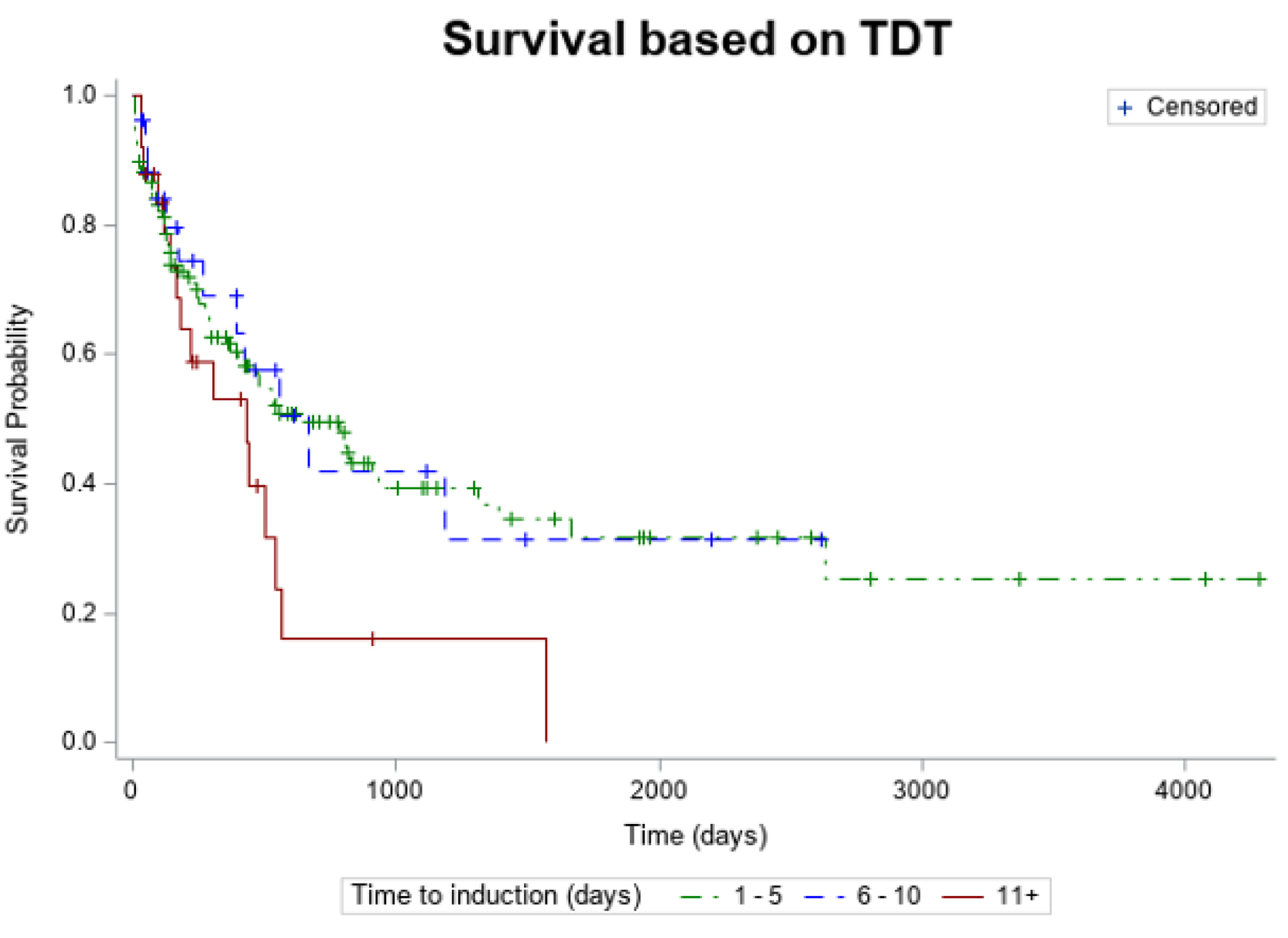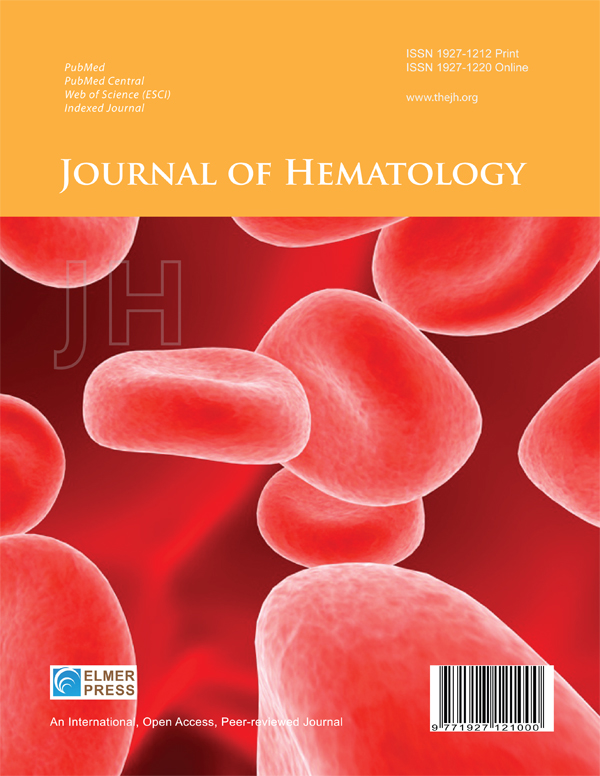Does Time Matter From Diagnosis to Induction in Acute Myeloid Leukemia?
DOI:
https://doi.org/10.14740/jh2075Keywords:
Acute myeloid leukemia, Timing from diagnosis to treatment, Complete remission, Overall survivalAbstract
Background: While molecular and cytogenetic testing may change prognosis and guide treatment intensity for patients with acute myeloid leukemia (AML), timing from diagnosis to treatment (TDT) on the other hand may impact treatment outcomes and survival. These considerations are sometimes at odds with each other given that molecular studies can take up to 2 weeks to result.
Methods: A retrospective cohort analysis was conducted at SUNY Upstate University Hospital to examine the effect of TDT on complete remission (CR) and overall survival (OS). The subjects were at least 18 years old and diagnosed with AML and treated between January 2010 and June 2024. TDT was divided into three categories: chemotherapy induction within 1 - 5, 6 - 10, and 11+ days. Univariate Kaplan-Myer survival analysis and multivariate Cox regression model were performed.
Results: A total of 187 patients were included, and 34% (n = 64) were younger than age 60. Patients were classified as 20% (n = 37) favorable, 36% (n = 67) intermediate, and 40% (n = 74) adverse risk, , while 4% risk stratification could not be completed due to missing data. Seventy-two percent (n = 134) had de novo AML. Chemotherapy induction began for 70% (n = 130) on days 1 - 5, 16% (n = 30) between days 6 - 10, and 14% (n = 27) on day 11 or after. The probability of achieving CR decreases for those who had induction 11+ days from diagnosis compared to those who had induction 1 to 5 days from diagnosis. This relationship was statistically significant (odds ratio = 0.32, 95% confidence interval (CI): 0.125 - 0.796; P = 0.003). However, no differences in OS and CR between TDT groups were seen when multivariate analysis was performed.
Conclusion: Our retrospective study showed no difference in OS based on TDT groups, which supports clinicians’ approach to await on comprehensive AML profiling for an optimal risk stratification at diagnosis and implementing best course of action.

Published
Issue
Section
License
Copyright (c) 2025 The authors

This work is licensed under a Creative Commons Attribution-NonCommercial 4.0 International License.








